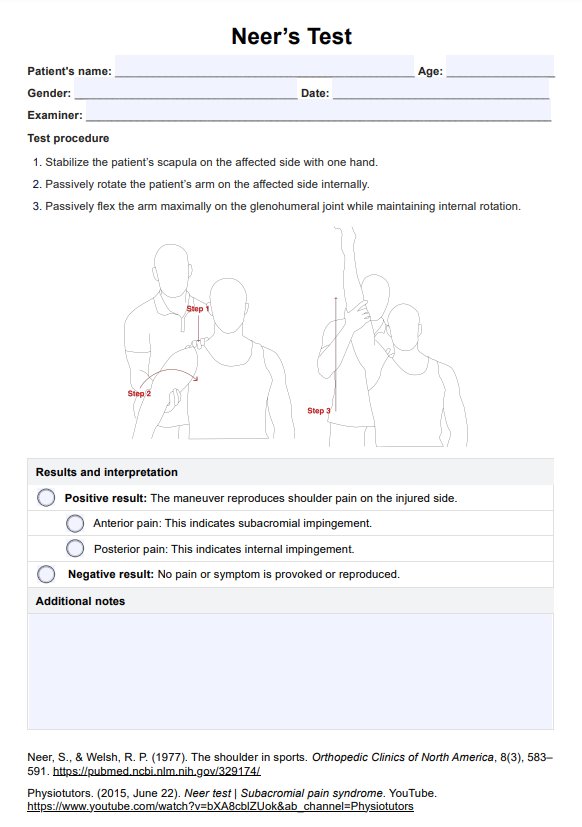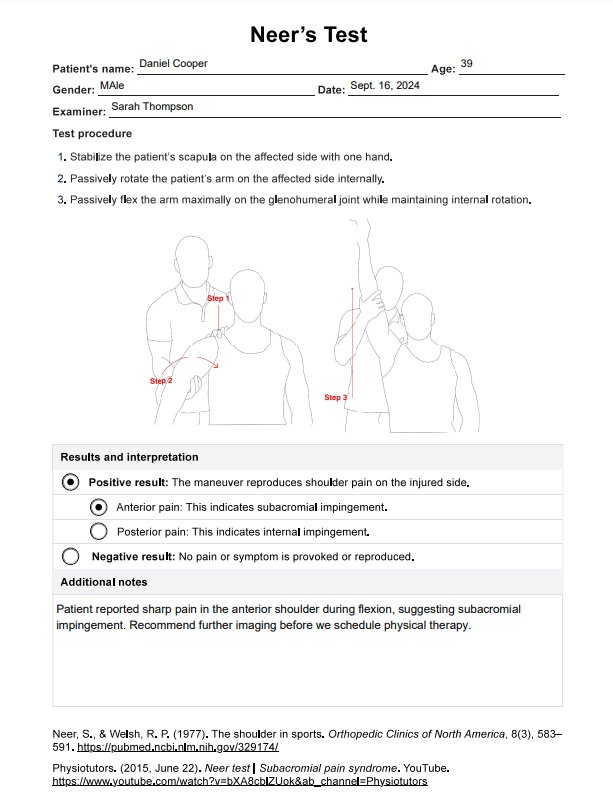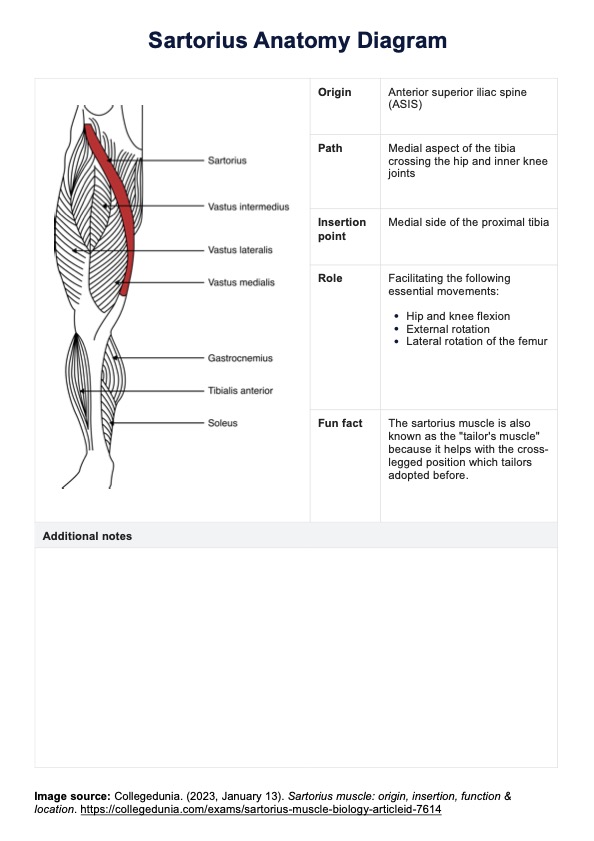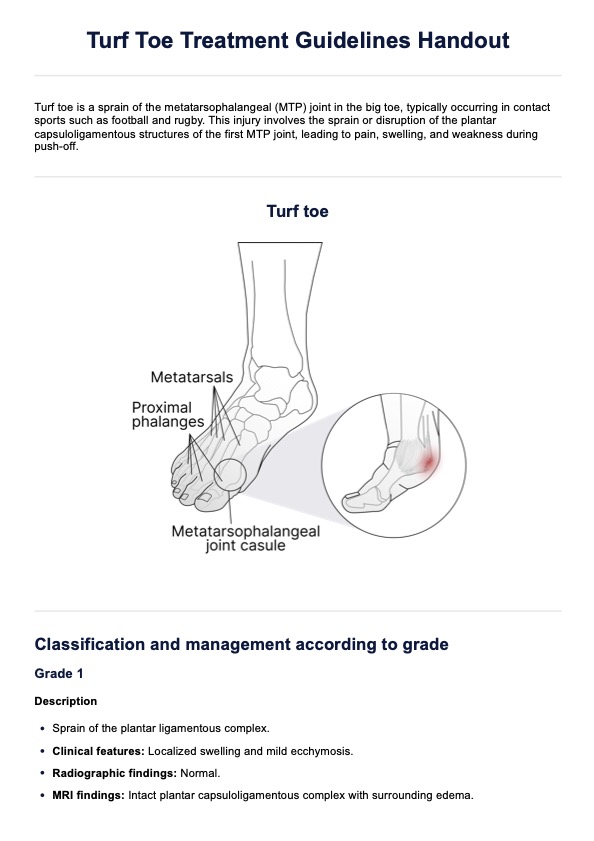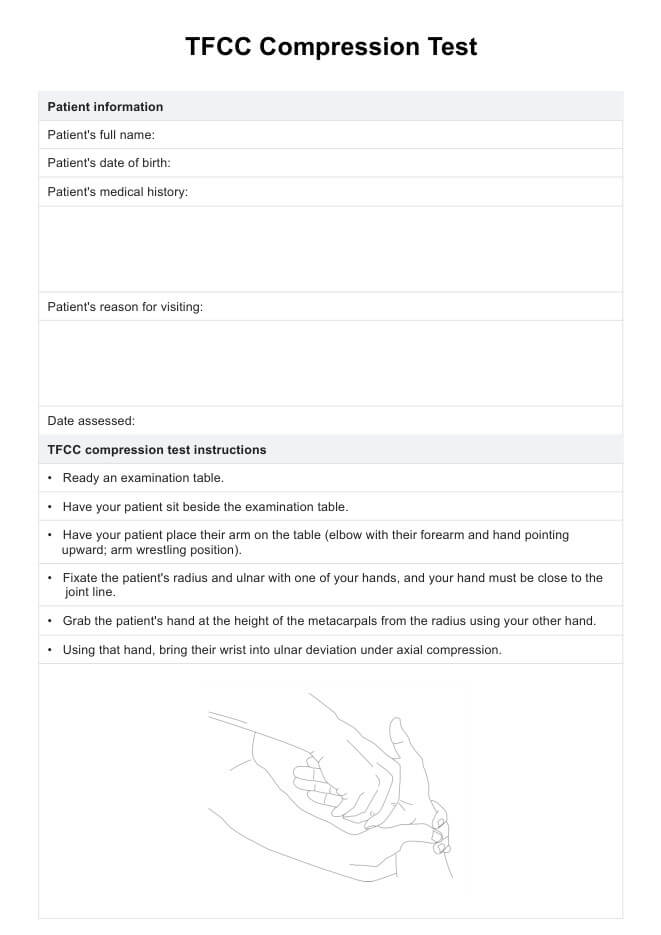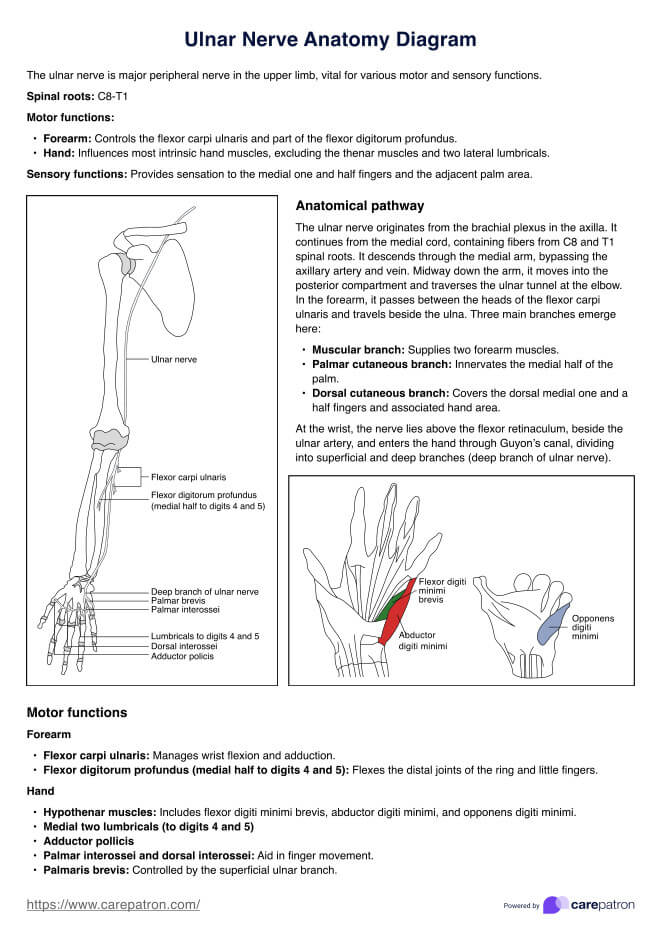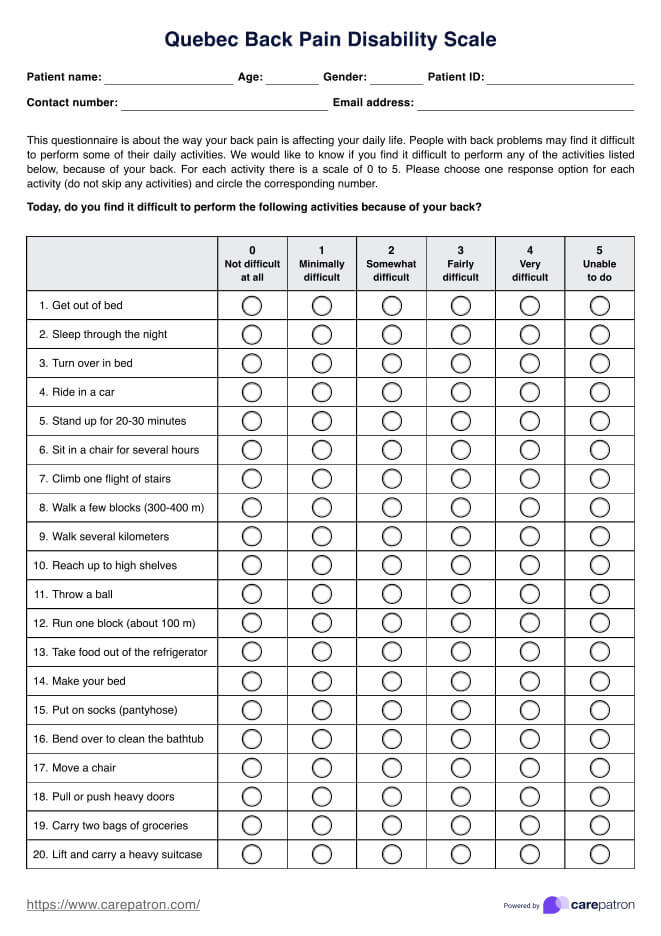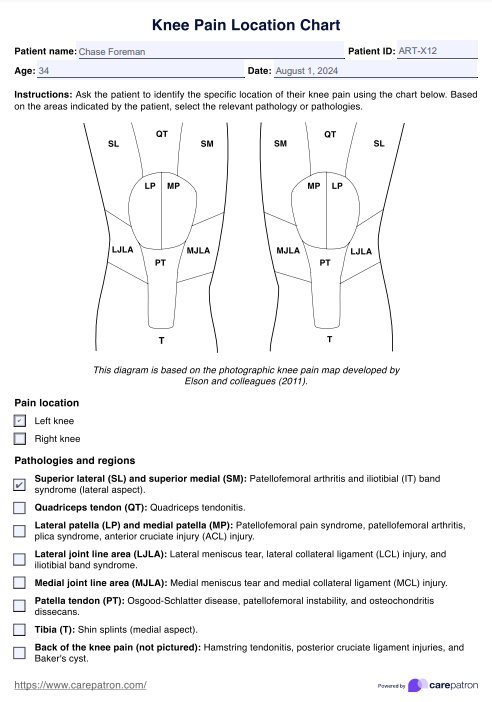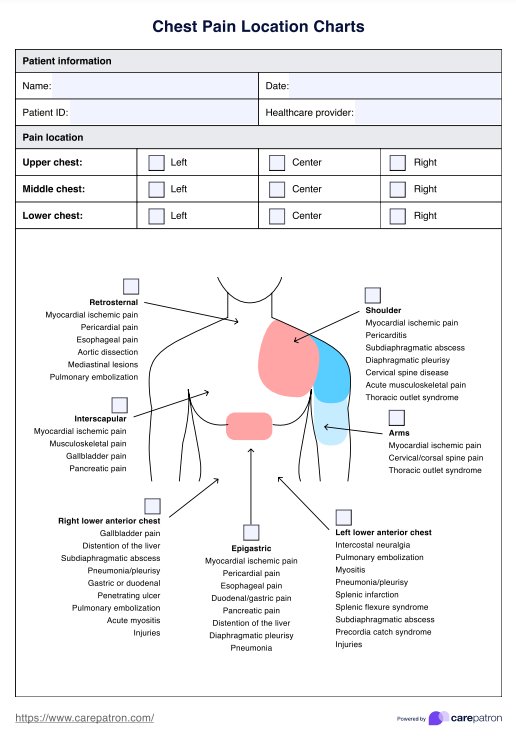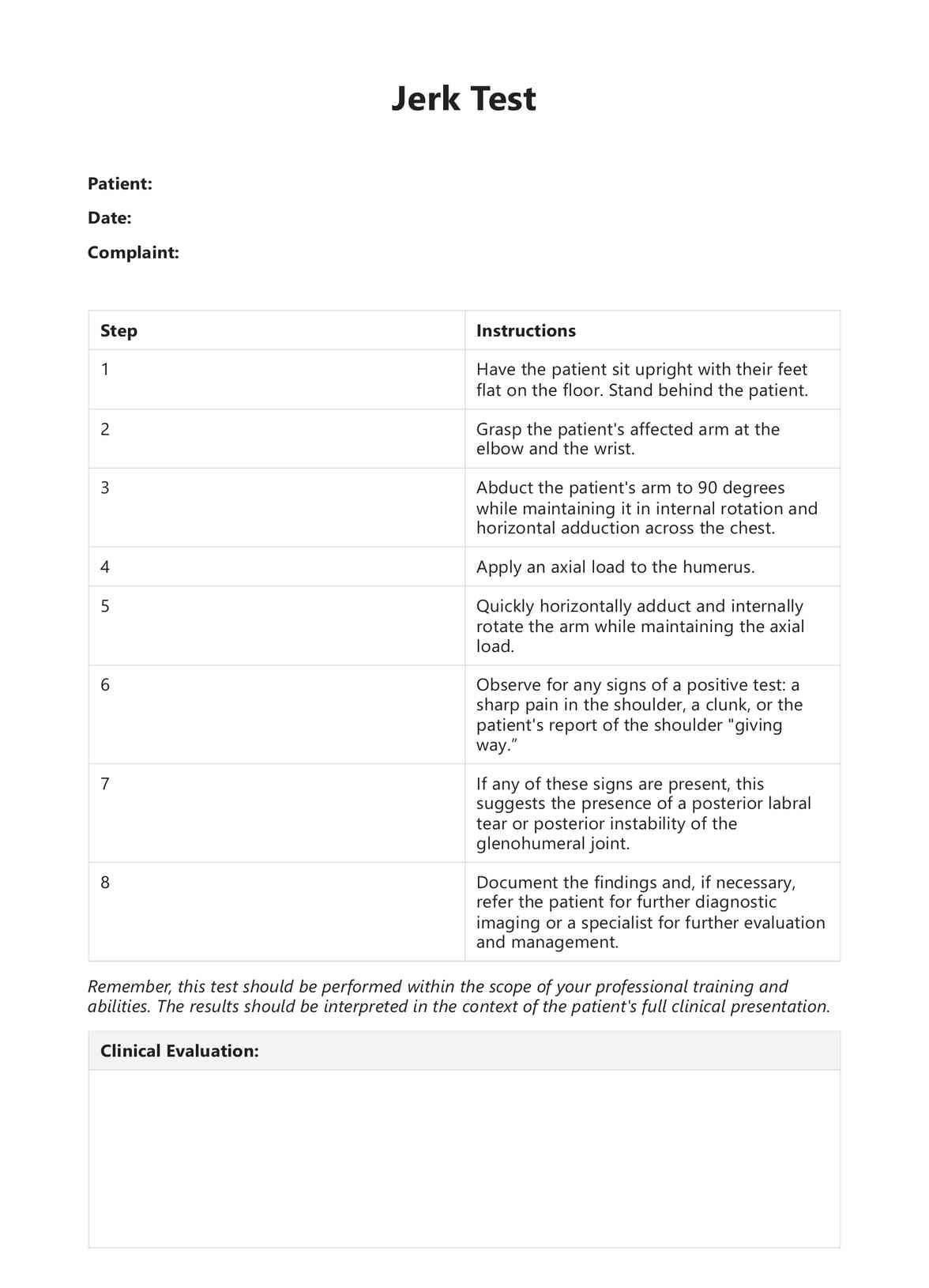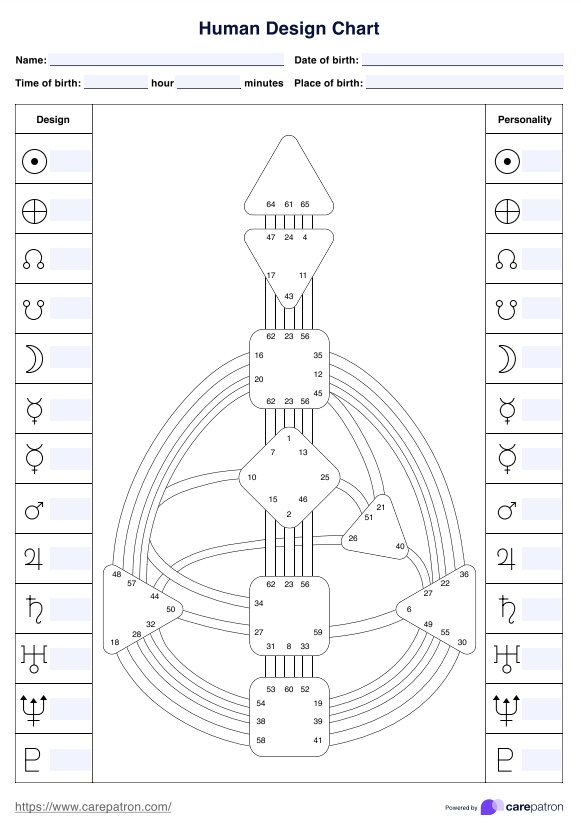Neer's Test
Neer's test is a diagnostic tool for shoulder impingement syndrome. Learn how this simple physical exam can identify the source of your patient’s shoulder pain.


What is Neer's Test?
Neer's Test, also known as the Neer impingement test is a physical exam maneuver used to diagnose subacromial pain syndrome and shoulder impingement syndrome, which affect the rotator cuff tendons. Shoulder impingement syndrome is a common condition that occurs when the tendons of the rotator cuff muscles become compressed and irritated as they pass through a narrow space between the bones and soft tissues of the shoulder joint. This can result in pain and weakness in the shoulder, limiting movement and function.
To do the Neer's Test, follow these steps:
- Stabilize the patient’s scapula on the affected side with one hand.
- Passively rotate the patient’s arm on the affected side internally.
- Passively flex the arm maximally on the glenohumeral joint while maintaining internal rotation.
Neer's Test is a simple diagnostic tool that a healthcare provider can perform in a clinical setting. It has moderately reliable diagnostic accuracy and diagnostic test properties, with a sensitivity of 0.72 and specificity of 0.60 according to Hegedus and colleagues (2012). It is often used with other physical exam maneuvers, clinical tests, and imaging studies (such as X-rays or MRI scans) to confirm a diagnosis of shoulder impingement syndrome and guide appropriate treatment.
Neer's Test Template
Neer's Test Example
How does this printable Neer's Test work?
Our Neer's Test template provides a structured and easy way to perform and document this physical examination. Here's how to use it:
Step 1: Access the template
Open the template by clicking the "Use template" button in the Carepatron app. You can also download a non-customizable PDF by selecting "Download." Print the template and keep it handy during patient assessments.
Step 2: Perform Neer’s Test
Follow the steps provided in the template. Ensure you stabilize the scapula, rotate the arm internally, and passively flex the arm as described.
Step 3: Record observations
Document the patient's response to the test. You can record the results as positive or negative based on pain reproduction.
Step 4: Interpret the results
Interpretation depends on where the pain occurs:
- Anterior pain suggests subacromial impingement.
- Posterior pain indicates internal impingement.
This interpretation is in line with the shoulder impingement algorithm by Cools et al. (2008).
Step 5: Discuss the results with the patient
Explain the results to the patient, including what the pain location indicates about their condition. This conversation helps patients understand their diagnosis and the next steps in their treatment.
What to do after a positive Neer impingement test
After a positive test, the next steps typically include further assessment and possible treatment for shoulder impingement. Here's a breakdown:
Conduct additional diagnostic tests
Confirm the diagnosis with imaging techniques such as X-rays or MRI to assess the extent of the impingement.
Initiate conservative treatment
Recommend non-surgical treatments, such as physical therapy exercises focusing on forward flexion and strengthening the rotator cuff muscles.
Consider corticosteroid injections
In some cases, corticosteroid injections can help reduce inflammation and alleviate pain, providing temporary relief from subacromial impingement syndrome.
Evaluate for shoulder surgery
If conservative treatments fail to relieve symptoms, discuss the option of shoulder surgery, such as arthroscopic decompression, to relieve the impingement.
Benefits of our free Neer's Test template
Our template can make your practice easier in many ways. Here are some of the rewards you can reap by integrating it into your physical examinations and therapy:
- Time-saving: Using a pre-designed Neer's Test template can save healthcare providers valuable time that would otherwise be spent creating a template from scratch.
- Accuracy: Templates help ensure accuracy and consistency in documentation and scoring, which is essential for making a correct diagnosis and tracking patient progress.
- Convenience: A printable template makes it easier for healthcare providers to perform and document the Neer's Test during a physical exam.
- Professionalism: A well-designed, easy-to-read template can help healthcare providers maintain a professional appearance and improve patient satisfaction.
- Accessibility: Free Neer's Test templates are easily accessible and can be downloaded and printed from anywhere with an internet connection.
- Cost-effective: The free Neer's Test templates are cost-effective for healthcare providers and patients, as they do not require additional fees or equipment.
References
Cools, A. M., Cambier, D., & Witvrouw, E. E. (2008). Screening the athlete’s shoulder for impingement symptoms: A clinical reasoning algorithm for early detection of shoulder pathology. British Journal of Sports Medicine, 42(8), 628–635. https://doi.org/10.1136/bjsm.2008.048074
Hegedus, E. J., Goode, A. P., Cook, C. E., Michener, L., Myer, C. A., Myer, D. M., & Wright, A. A. (2012). Which physical examination tests provide clinicians with the most value when examining the shoulder? Update of a systematic review with meta-analysis of individual tests. British Journal of Sports Medicine, 46(14), 964–978. https://doi.org/10.1136/bjsports-2012-091066
Commonly asked questions
The Neer test focuses on assessing forward flexion and subacromial impingement by passively elevating the arm, while the Hawkins test evaluates internal impingement by flexing the shoulder and elbow to 90 degrees, then applying internal rotation.
According to Hegedus et al. (2012), the Neer test has a sensitivity of 0.72 and a specificity of 0.60 in diagnosing shoulder impingement.
The Neer test is passive, meaning the examiner moves the patient’s arm without active participation from the patient.


